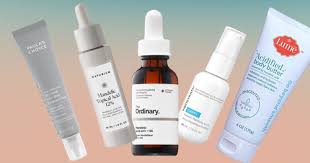
Can Retin-A and Mandelic Acid Be Used Together? The Expert Guide
Let’s face it—skincare can be confusing. Some ingredients love to work together. Others? Not so much. And some ingredients seem powerful enough to go solo.
One of the most asked questions in skincare communities today is whether Retin-A (tretinoin) and mandelic acid can be used together. Both are powerhouse ingredients, but can they team up in your skincare routine?
The short answer is yes, but with some important precautions.
In this post, we’ll walk through what each ingredient does, how they benefit your skin, and exactly how to use them together without damaging your skin barrier.
What Is Mandelic Acid?
Mandelic acid is a type of alpha hydroxy acid (AHA). It’s derived from bitter almonds and is widely used in skincare for its gentle exfoliating and brightening abilities.
It’s often found in cleansers, toners, serums, peels, and even professional facial treatments.
Why Is Mandelic Acid Considered Gentle?
Unlike glycolic acid, mandelic acid has a larger molecular structure, which slows down how quickly it penetrates the skin. This makes it less irritating, especially for those with sensitive or dry skin types.
Despite its gentle nature, mandelic acid is still highly effective. It works on the surface of the skin to dissolve dead skin cells, oil, bacteria, and impurities that can lead to breakouts.
Benefits of Mandelic Acid:
Fights acne and reduces blackheads
Helps fade dark spots, hyperpigmentation, and age spots
Boosts collagen production
Improves skin texture and tone
Smooths the appearance of fine lines and wrinkles
Helps skin appear brighter and more even
If you want to learn more about mandelic acid, check out our dedicated post just for this miracle exfoliant.
What Is Retin-A (Tretinoin)?
Retin-A, also known as tretinoin, is a prescription-strength derivative of vitamin A. It’s often used for treating acne, aging, texture, and discoloration.
Tretinoin is significantly more potent than over-the-counter retinol and should only be used under guidance from a dermatologist or healthcare provider.
Benefits of Retin-A for Skin:
Boosts cell turnover to reveal fresh, healthy skin
Reduces fine lines, wrinkles, and other signs of aging
Helps fade acne scars and dark spots
Clears clogged pores and reduces breakouts
Stimulates collagen production
Thickens the skin over time, improving overall strength
Retin-A is a potent ingredient that transforms the skin but must be used with caution to avoid irritation or excessive dryness.
Is Retin-A Better Than Mandelic Acid?
It depends entirely on your skin goals and skin type.
Retin-A is best for anti-aging, acne treatment, and improving skin texture and collagen levels.
Mandelic acid is better suited for those with sensitive skin, uneven tone, acne, or hyperpigmentation.
Skin Type Matters:
If you have sensitive or dry skin, Retin-A might feel too strong. Mandelic acid offers a gentler alternative that still provides impressive results.
For other skin types—especially oily, combination, or mature—Retin-A can be highly effective when used correctly.
No matter which you choose, always wear SPF 50 daily. Both ingredients increase your skin’s photosensitivity, making sun protection a non-negotiable step.
Can I Mix Mandelic Acid with Retin-A?
Yes, you can use mandelic acid and Retin-A together, but it requires careful planning.
Because both ingredients exfoliate and boost skin cell turnover, layering them without a plan can cause irritation, dryness, or peeling.
The Safest Way to Combine Mandelic Acid and Retin-A:
Apply mandelic acid in the morning
Apply Retin-A in the evening
This strategy gives your skin enough time to rebalance between active treatments and helps reduce the risk of over-exfoliation or redness.
If your skin feels too sensitive, try alternating them on different nights. For example, use mandelic acid on Monday, Wednesday, and Friday, and Retin-A on Tuesday and Thursday.
Always follow with a gentle moisturizer and wear SPF during the day.
How Often Should You Use Mandelic Acid?
How frequently you use mandelic acid depends on the product type and percentage of active acid.
2-3 times per week is typical for serums with 10% mandelic acid or higher
Daily use is safe for lower concentrations in cleansers or toners
Always patch test before regular use
If you’re new to acids, start with once or twice per week, then increase usage gradually as your skin builds tolerance.
How Should Mandelic Acid Be Used in a Routine?
The basic skincare layering rule is: thinnest to thickest.
So how you apply mandelic acid depends on the product format:
Cleanser: Use it first, then rinse off
Toner or Serum: Apply after cleansing, before heavier treatments
Moisturizer: Use after your serum to lock in hydration
If you use multiple actives, space them out. This gives each ingredient the chance to work effectively and prevents irritation.
Avoid applying a heavy cream before a light acid serum. The cream will block absorption, wasting the active ingredient’s potential.
When Should Retin-A Be Used?
Always apply Retin-A at night, after cleansing and before moisturizer. UV light deactivates tretinoin, so it should never be used during the day.
Here’s the ideal application order:
Cleanse your skin thoroughly
Pat skin dry and wait 15–20 minutes
Apply a pea-sized amount of Retin-A
Follow with a moisturizer to reduce dryness
This wait time allows your skin’s pH to rebalance after cleansing, which helps tretinoin work more effectively and with less irritation.
Can I Use Mandelic Acid Before Retin-A?
Technically, yes—but only if your skin is already used to both ingredients and you’re alternating usage days.
Using mandelic acid directly before Retin-A can over-exfoliate the skin, especially if both products are high-strength.
Instead, keep them separate by time of day or by alternating days in your routine.
Signs You’re Overdoing It:
Watch out for these signs of overuse:
Redness and irritation
Dry, flaky patches
Burning or stinging
Breakouts that worsen instead of improve
If you notice any of these symptoms, take a break. Focus on hydration, barrier repair, and sun protection until your skin calms down.
Key Takeaways: How to Safely Use Mandelic Acid and Retin-A Together
Yes, they can be used together—but cautiously
Best practice is to use mandelic acid in the morning and Retin-A at night
If that’s too much, try alternating nights instead
Always apply SPF 50 during the day to protect against sun damage
Watch for signs of irritation and give your skin time to adjust
Start slow and introduce one new product at a time
Suggested Routine Using Both Mandelic Acid and Retin-A
Morning:
Gentle Cleanser, Mandelic Acid Toner or Serum, Hydrating Serum (e.g. hyaluronic acid), Lightweight Moisturizer, Sunscreen SPF 50
Evening:
Mild Cleanser, Wait 15 minutes, Retin-A (pea-sized amount), Barrier-repair Moisturizer
Tip: On days you’re not using Retin-A, you can apply a hydrating mask or peptide serum to support skin repair and balance.
Still Unsure? Consult a Dermatologist
If you’re unsure how your skin might react or if you have underlying skin conditions like rosacea or eczema, it’s best to consult a dermatologist before adding both ingredients into your routine.
Personalized guidance can help you avoid irritation and get the most out of your skincare.
Want More Skincare Tips Like This?
Join the conversation over on Instagram @TheBeautyInsiders for daily skincare tips, tutorials, and product recommendations. Got questions? Send us a DM—we’re always here to help!
And don’t forget to subscribe to our YouTube channel, The Green Sofa, for expert videos, ingredient breakdowns, and how-to guides. We’ll see you there!


